For the final time in 2022, baseball completed a weekend with no interference from college football or the NFL (regular season, at least). The college game officially returns this Saturday, while the NFL will conclude its final preseason weekend before Week 1 gets underway Sept. 8. While the pigskin tractor beam absorbs the most of the sports world’s attention, baseball will gear up for the stretch run replete with intrigue before the postseason gets underway (though with admittedly a more crowded stage to share with our football overlords).
But like the MLB season in the face of growing competition on the sports calendar, the power rankings march on. Here’s where things stand after another lively week.
30. Washington Nationals (Last Week: 30)
29. Oakland A’s (LW: 28)
28. Detroit Tigers (LW: 29)
27. Pittsburgh Pirates (LW: 27)
26. Kansas City Royals (LW: 24)
The Royals appeared to be hitting a bit of a stride after taking six out of eight games from the Red Sox and White Sox earlier this month. But a brutal 10-game stretch against the Dodgers, Twins and Rays concluded Sunday with Kansas City scraping together only two wins while managing just 20 total runs. (One of those victories, though, was a shutout over the Dodgers, who have won 24 out of 30 since the All-Star break while scoring an average of six runs per game. Perhaps that should count for more than one win).
If runs have been difficult to come by for the Royals lately, Vinnie Pasquantino is not to blame. The rookie first baseman—who also sports maybe the game’s most fun name to say—was an 11th-round pick out of Old Dominion in 2019 and tore through the minor league ranks, posting a .956 OPS in just over 1,000 plate appearances. That earned him a call-up June 28, and though he scuffled for his first month against big league pitching, the physically imposing slugger has found his footing as of late.
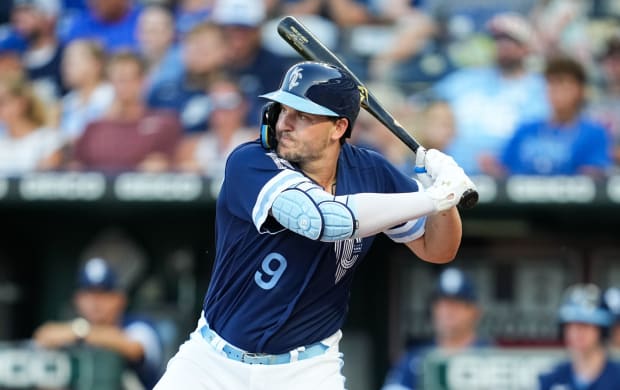
Jay Biggerstaff/USA TODAY Sports
Despite an 0-for-4 showing Sunday, Pasquantino is batting .333/.390/.609 since the start of the month, with five home runs and four doubles. Most impressively, he’s maintained his elite contact skills that he demonstrated in the minors, striking out a mere eight times in his last 77 plate appearances and in just 13.6% of the time in his young major league career.
A sub-15% strikeout rate with a walk rate in the double digits makes for a pretty high offensive floor. Pasquantino’s power is what will determine how high his ceiling is, and if his current form is indicative of his long-term progression, the Royals could have a budding franchise cornerstone on their hands.
25. Cincinnati Reds (LW: 26)
24. Colorado Rockies (LW: 23)
23. Los Angeles Angels (LW: 21)
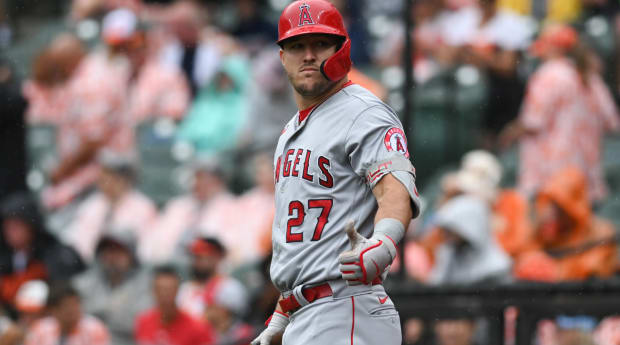
Tommy Gilligan-USA TODAY Sports
22. Miami Marlins (LW: 22)
21. Chicago Cubs (LW: 25)
20. Texas Rangers (LW: 20)
What a week it was for the Rangers. Monday saw the firing of fourth-year manager Chris Woodward, which was explained to the media by longtime president of baseball operations Jon Daniels. Two days later, it was Daniels who was axed, with Texas moving in a new direction under current general manager Chris Young. The rationale behind the firings was understandable, even if the timing was a bit perplexing. Through it all, the team won four out of seven games, managing to scratch out a winning week for the first time since late June.
Among the positive developments for the Rangers last week—and for the season as a whole—has been the progression of first baseman Nathaniel Lowe. The 27-year-old homered again in Sunday’s 7–0 win over the Twins and has now hit safely in 26 of his past 31 games. During that stretch, Lowe is batting .364/.408/.587, with six homers and 14 extra-base hits.
After breaking out in 2021—his first season as an everyday player—his strong performance in ’22 supports his standing as a part of Texas’s core. He is under team control through the ’26 season, when he’ll be 30 years old.
Lowe, a former 13th-round draft pick, was acquired by Texas before the 2021 season as part of a package from the Rays in exchange for three minor leaguers yet to make their big league debuts. He represents the type of shrewd move the new front office regime will need to replicate in order to build the next contending Rangers squad.
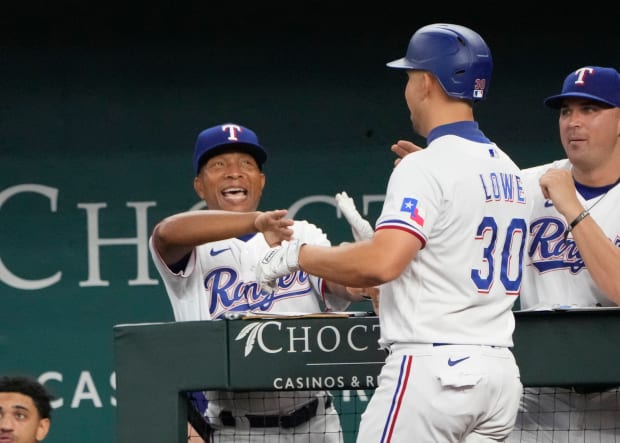
Jim Cowsert/USA TODAY Sports
19. Arizona Diamondbacks (LW: 19)
18. San Francisco Giants (LW: 18)
17. Boston Red Sox (LW: 17)
16. Chicago White Sox (LW: 16)
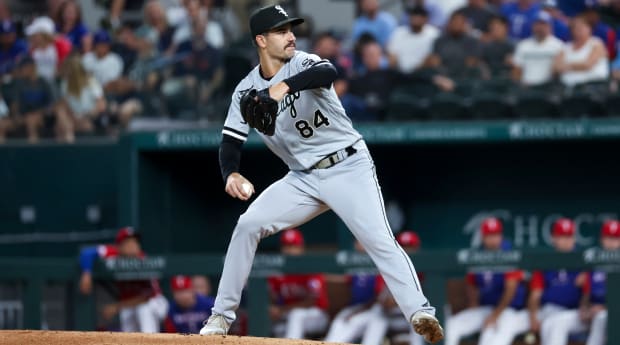
Kevin Jairaj/USA TODAY Sports
15. Baltimore Orioles (LW: 15)
14. Milwaukee Brewers (LW: 12)
The Brewers were able to tread water against the teeth of their schedule, going 5–4 in nine games against the Rays, Cardinals and Dodgers. That preceded a disappointing three-game set against the Cubs, during which Milwaukee dropped two games each by a one-run deficit.
Saturday’s extra-innings defeat saw the first blown save of the season from Devin Williams, who walked three of the six hitters he faced and gave up a game-tying, two-out single before being pulled. The game ended a seven-game streak without allowing an earned run for Williams, and it was the first time in 15 appearances that Williams issued a walk. During the stretch in between walks, the All-Star struck out 20 of the 46 batters he faced with just seven base runners allowed.
One bad outing should not give any reason for panic that Williams is wavering in his dominance, or that he’s not ready for the closer’s role vacated by Josh Hader. Williams has been one of the league’s most effective relievers since his rookie campaign in 2020, and that’s not likely to change anytime soon. But having two lights-out relievers is better than one, and the margin for error late in games shrinks with Hader’s absence. That’s particularly true considering Taylor Rogers, who arrived in Milwaukee as part of the Hader deal, has given up five earned runs in eight games with the Brewers (though he did pitch a scoreless ninth in Sunday’s 5–2 victory).
Watch MLB games all season long with fuboTV: Start a free trial today!
The Brewers have 23 one-run victories this season, second only to the Mariners (more on them in a bit). Hader was certainly a big part of that, but he wasn’t the only part. Williams should get back to his reliable ways soon enough, but for Milwaukee’s sake, it’d better be quick: the Brewers head to Los Angeles to face the Dodgers for three games this week before the schedule softens a bit.
13. Minnesota Twins (LW: 14)
12. Tampa Bay Rays (LW: 13)
11. Cleveland Guardians (LW: 9)
10. San Diego Padres (LW: 8)
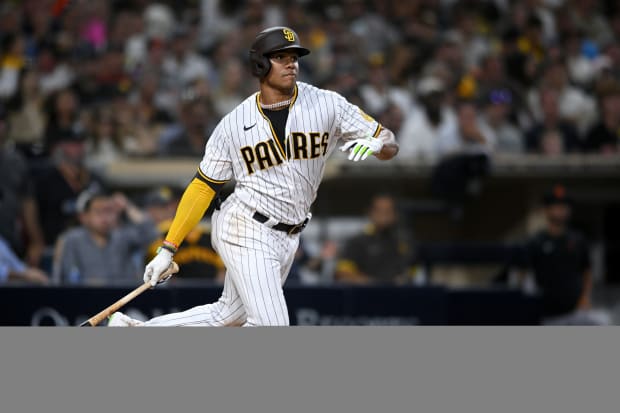
Orlando Ramirez/USA TODAY Sports
9. Toronto Blue Jays (LW: 11)
8. Seattle Mariners (LW: 10)
Remember last year’s Pythagorean record darlings? The cardiac Mariners are back and even better than last year’s version that won 90 games despite a minus-51 run differential, though this year’s squad has maintained its magic in one-run games. Seattle is 25–17 in one-run contests this season, which stands as the most wins and best winning percentage in such games of any team. They’ve gotten much better at preventing runs, though, allowing an average 0.73 fewer runs per game this season compared to last. As such, Seattle’s plus-33 run differential through 122 games paints a picture of a much more complete team than last year’s fun-but-flawed version.
The Mariners will need to keep that steady hand in tight situations going forward, because the race for the three American League wild-card spots is set up to be a doozy. Seattle, Tampa Bay and Toronto are all tied atop the wild-card standings, with Minnesota and Baltimore 2.5 games out and the White Sox trailing by just 3.5 games. If the Mariners are able to finally snag their long-awaited playoff berth, it will have been hard-earned.
Helping the cause is the return of rookie phenom Julio Rodríguez, who was activated from the injured list Aug. 12 after missing 11 games with a wrist injury. Following a slow start, Rodriguez has turned in back-to-back three-hit games, though he has just two extra-base hits and one walk in 45 plate appearances since returning to the lineup. Rodríguez is far from a one-man show—Eugenio Suárez, Adam Frazier, Cal Raleigh and Mitch Haniger are all swinging hot bats of late—but he’ll need to rediscover his pre–All-Star break form for Seattle to fend off the competition.
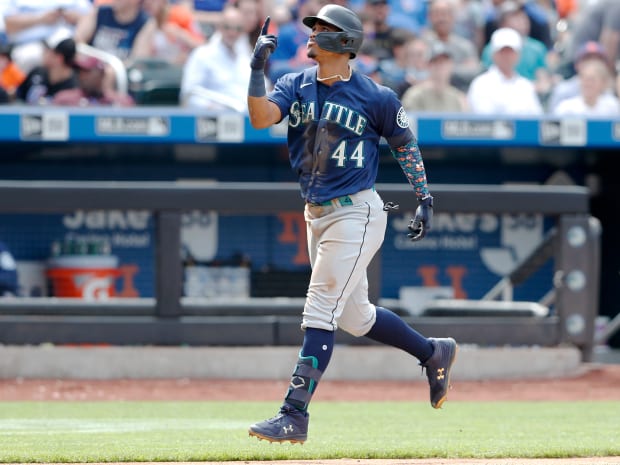
AP Photo/Noah K. Murray
As far as the Mariners’ chances in one-run games? Their bullpen ranks seventh in the majors with a 3.67 ERA, and of the six relievers with at least 10 appearances in the past month, five have sub-3.00 ERAs. That’s a recipe for sustained success in close contests, along with a rotation anchored by Luis Castillo, George Kirby, Robbie Ray and Logan Gilbert.
7. Philadelphia Phillies (LW: 7)
6. New York Yankees (LW: 5)
5. St. Louis Cardinals (LW: 6)
4. Houston Astros (LW: 3)
A rematch of last year’s Fall Classic did not disappoint, with the Braves taking two of three from the Astros in Atlanta over the weekend. All three games were competitive, with the final two getting decided in the late innings. Houston was able to leave town without getting swept thanks to a strong outing by José Urquidy on Sunday, with the righthander giving up just two runs with six strikeouts across seven innings.
The Astros’ rotation is what’s guided the team to an 11.5-game lead in the division, and it’s gotten even stronger in the past two weeks with the return of Lance McCullers Jr. from the injured list. McCullers was shaky in his Friday outing against the Braves and has issued seven walks in his two starts. But he threw 91 pitches in his most recent start, suggesting that he’s at nearly full strength from a stamina standpoint. And Houston doesn’t need McCullers to be at his old All-Star form considering how many reliable starters the team has already.
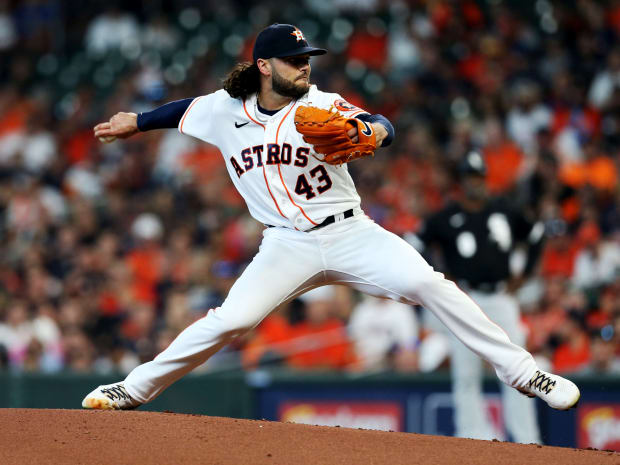
Thomas Shea/USA TODAY Sports
Justin Verlander, Framber Valdez, Cristian Javier and Urquidy form perhaps the best quartet of starting pitchers among all the postseason contenders. The Astros’ starters lead the American League with a 3.12 ERA, with McCullers and Luis Garcia rounding out the group. How Dusty Baker decides to manage each arm come October will be interesting to watch play out, but the veteran manager won’t be short on options as he tries to shepherd Houston back to the Fall Classic.







